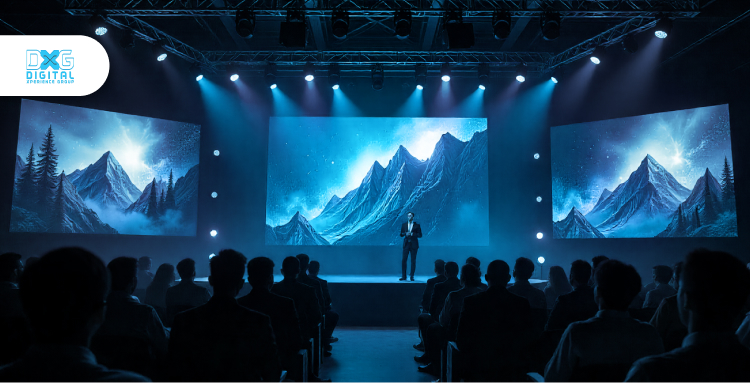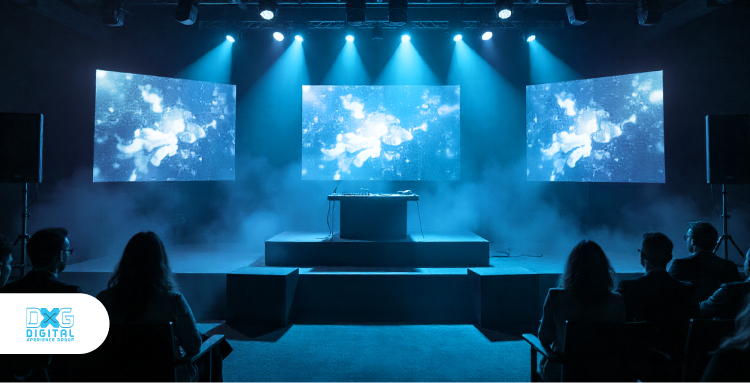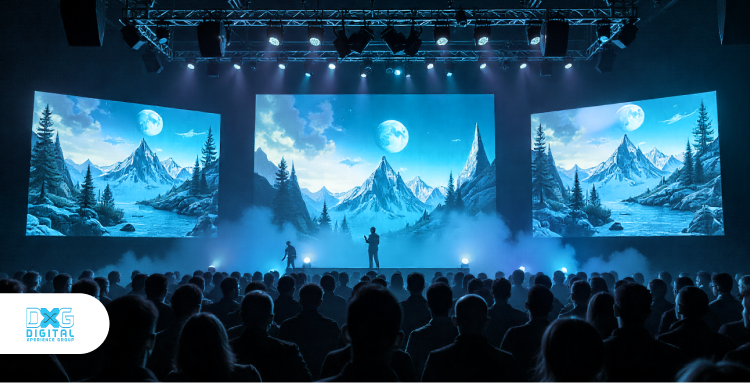Creating Visual Storytelling with Graphics and Animation

October 21, 2025
Creating Visual Storytelling with Graphics and Animation
Creating visual storytelling with graphics and animation is the art of turning ideas into experiences that make us feel alive. It begins with a story that knows what it wants to say, grows through visuals that speak emotion, and finds its rhythm through motion that feels genuine. The process blends design, timing, and sound until the audience is watching as well as feeling something real.
The secret is balance, every frame serving a purpose, every transition carrying emotion. Visual storytelling works best when the story moves as naturally as thought itself, revealing more with each second. And it’s in that quiet unfolding where the real connection begins.
(1) Start with the Story
Start with the story, not the tools. We know that animation without a story is just motion. You can have the most advanced software, the sharpest 3D models, and a color palette worthy of a studio, but if there is no heartbeat, the visuals feel hollow.
From our experience, the most compelling animation videos always begin with a clear story arc. Think of a Pixar film. You remember the journey of the characters, the moments of tension and triumph, not the technical tricks behind the scenes. Every movement, every frame, serves the story. A character’s glance or a shift in lighting conveys emotion without a single word.
Even on a technical level, story-first animation works better. When we storyboard, we connect each motion to a story beat. Camera pans, color changes, and timing are not random. They guide the viewer, create focus, and shape the emotional rhythm. This approach switches simple graphics into experiences that maintain their appeal.
Now, the next part is about visuals that give shape to the story. Something happens between light and shape, and the story starts to breathe on its own. No one says much, but everyone understands.
(2) Design Visuals That Share the Emotion

Designing visuals that speak is where your story starts to live. A carefully chosen color, a single font choice, or a subtle shape can change how someone feels about an entire scene.
We’ve seen firsthand how subtle color shifts can completely change a viewer’s perception. Think about the difference between the bright, warm tones of a Disney scene and the muted, cold palette of a Stranger Things frame. The colors are telling the audience what to feel before a character even speaks.
Typography works the same way. Bold, clean fonts give authority and clarity. Handwritten or quirky fonts convey personality or playfulness. In titles or motion graphics, the font is part of the story. Choosing the wrong type can confuse or disconnect the viewer instantly.
Visual metaphors add another layer. A flickering streetlight can signal doubt or suspense, and a rising sun can hint at hope or renewal. We often reference everyday pop culture moments to guide decisions. A spinning Millennium Falcon or the shifting shadows in Gotham look cool and at the same time tell a story visually.
Technical tips we rely on:
Maintain color harmony across scenes to avoid visual fatigue.
Match typography style to character or scene tone.
Use consistent visual metaphors for emotional continuity.
Once visuals are designed to speak clearly, animation can carry the story even further. The next step is about making motion meaningful, so every movement adds weight to what the visuals are already saying.
(3) Use Motion to Convey Emotion
When animating, we always ask ourselves, does this movement serve the story, or is it just decoration? A character leaning forward, a subtle camera pan, or even the speed of a cut can create tension, excitement, or intimacy. Think of how The Mandalorian uses slow, deliberate shots in tense moments and fast, sharp movements in action sequences. The motion tells the audience how to feel before a word is spoken.
Timing and pacing are technical, but they can be learned visually. Longer pauses can give gravity to a moment, while rapid transitions can create urgency. Even the way an object enters or exits the frame can suggest meaning. In our projects, we map each motion to emotional beats so that movement never feels random.
Transitions are equally powerful. A fade can signal memory or reflection. A hard cut can surprise or shock. We often borrow techniques from films or music videos, observing how they manipulate the viewer’s perception with simple shifts in motion.
Once motion serves the story perfectly, the final layer, which is about sound and atmosphere, can create a full sensory experience that stays with the viewer. That is the next piece of the puzzle.
(4) Add Sound and Atmosphere

The role of sound and atmosphere is often overlooked, yet it can turn visuals into an unforgettable experience. At Digital Xperience Group, we think of sound as part of the story itself. Music, effects, and ambient noise don’t just accompany animation—they shape emotions and highlight meaning.
Even the smallest audio cue can make a huge difference. Imagine the soft footsteps echoing in a suspenseful hallway or the distant roar of a crowd building tension in a sports scene. These subtle details guide the viewer’s perception without them even realizing it.
Sound design for animation is technical but approachable:
Ambient layers set the world. The chatter of a busy café or the gentle patter of rain can instantly make a moment feel real.
Musical cues shape emotions. A rising string section can build excitement, while a gentle acoustic guitar can signal calm or reflection.
Effects and foley accentuate motion. The swing of a sword, the slam of a door, or even the rustle of clothing gives movement impact and realism.
Atmosphere also includes silence. Strategic silence can make a reveal more powerful or heighten suspense. Pop culture often shows this perfectly, like the pause before a jump scare in classic horror films or the stillness before an epic battle in fantasy films.
When visuals, motion, and sound all align, the story becomes immersive. The final step is testing and refining these layers with real audiences to ensure the impact lands, which is where the story comes full circle.
(5) Test and Refine Every Scene
Testing, refining, and learning are where an animation proves itself. We all know that even the most polished visuals, perfect motion graphics, and layered sound are incomplete without seeing how people actually respond. Audience reaction tells you what works and what falls flat.
We never release without seeing how real viewers respond. It’s the only way to know if the story truly connects. A subtle smile, a pause, or a distracted glance can reveal more than hours of internal review ever could.
Iteration is a structured process:
Observe: Watch how viewers engage with timing, motion, and narrative beats. Notice what grabs attention and what loses it.
Refine: Adjust pacing, visuals, or audio cues based on real reactions. A joke that lands in the storyboard may need a visual tweak, or a dramatic pause may need extension.
Learn: Record insights for future projects. Patterns evolve over time, teaching how different audiences respond to colors, motion, or sound.
Pop culture examples show the value of testing. Pixar famously screens rough cuts repeatedly, adjusting even tiny details until the emotional flow lands perfectly. Music videos, trailers, and episodic content follow similar principles, adjusting edits and effects to maximize engagement.
Once iteration is complete, the story reaches its full potential. Every frame, motion, and sound now works in harmony, ready to create the enchanting experience that audiences remember. The final step is bringing it all together and letting the story live.
(6) Digital Xperience Group Turns Graphics and Animations into Living Stories

Visual storytelling with graphics and animation is not something you master overnight. It is an art honed through practice, observation, and thoughtful iteration. Each color choice, every movement, and all the sound layers combine to create an experience that stays with the viewer long after the screen goes dark.
We’ve seen how small details, like a shift in lighting or the timing of a sound cue, can completely transform a scene. Think of how films like Inception or animated shorts from Pixar make you feel suspense, joy, or wonder. That level of control and impact comes only from careful attention to craft and constant refinement.
We’ve guided countless brands through this process, and we’re passionate about helping yours come alive visually. Each step, from the first sketch to the final sound, carries the purpose to reach people and stay with them long after the light fades away.
For anyone ready to convey their message, these techniques are the blueprint for professional animation services and expert visual storytelling tips that create results. The journey from concept to full-blown experience is waiting, and it starts with your story.
